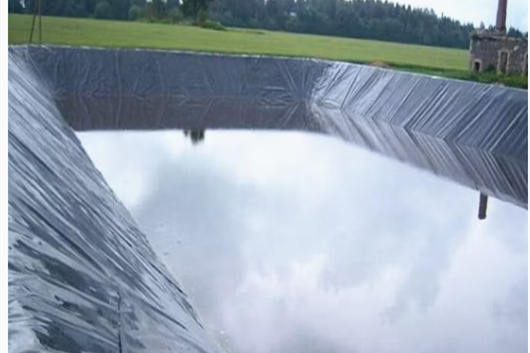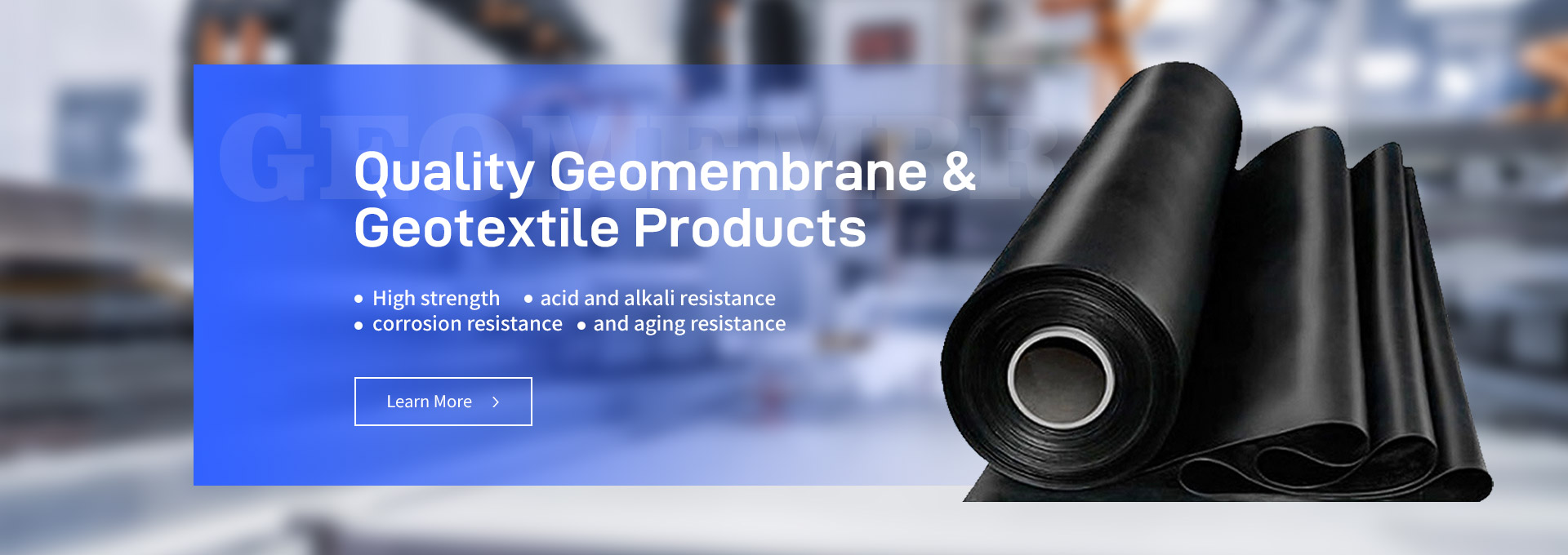In modern engineering projects, geomembranes have become indispensable for applications requiring reliable impermeability. Whether in water storage ponds, sewage ponds, artificial lakes, or landfills, geomembranes provide exceptional waterproofing to protect the environment and maintain structural integrity. However, achieving optimal performance depends on choosing the right materials, following proper installation procedures, and maintaining the geomembrane over time. This article provides an in-depth guide on how to ensure your geomembrane performs effectively, highlighting tips, case studies, and expert recommendations.

What Are Geomembranes?
Geomembranes are synthetic liners or membranes, typically made from high-density polyethylene (HDPE), low-density polyethylene (LDPE), or polyvinyl chloride (PVC). They are specifically designed for waterproofing and are used in projects to prevent liquids from leaking into or out of containment areas. Their versatility and efficiency make them a go-to choice for professionals in industries ranging from agriculture to waste management.
Key Features of Geomembranes:
1. Waterproofing and Impermeability: Prevent liquid seepage, critical for applications like landfills and water storage ponds.
2. Durability: High resistance to tears, punctures, and external pressure.
3. Chemical Resistance: Effective against acids, alkalis, and other corrosive substances, particularly in sewage pond geomembranes.
4. Environmental Protection: Stop pollutants from contaminating soil and groundwater.
Key Factors Affecting Geomembrane Waterproofing Performance
To ensure the waterproofing efficiency of geomembranes, it’s essential to focus on material selection, installation processes, seam quality, and maintenance.
1. Selecting High-Quality Geomembranes
The quality of the geomembrane is the cornerstone of its performance. A durable, reliable geomembrane prevents failures and minimizes long-term costs.
Characteristics of a High-Quality Geomembrane:
Optimal Thickness: Geomembranes typically range from 0.5mm to 2.0mm in thickness. Thicker membranes provide enhanced durability and better resistance to punctures.
High Tensile Strength: High tensile strength ensures the geomembrane can withstand ground settlement or external stress.
UV Resistance: For exposed applications like water storage pond geomembrane, UV-resistant geomembranes prevent degradation under sunlight.
Chemical Resistance: Particularly important for sewage pond geomembranes, which must resist acids, bases, and industrial chemicals.
Always procure your geomembrane from a reputable geomembrane wholesaler to ensure consistent quality and reliable performance.
2. Installation Techniques
Even the best geomembrane material can fail if the installation process is flawed. Proper preparation and execution during installation are critical to achieving effective impermeability.
(a) Ground Preparation:
The surface where the geomembrane will be installed must be smooth, clean, and free from sharp objects that could puncture it.
Use a layer of geotextile beneath the geomembrane if the surface is rough or uneven.
(b) Seaming:
Seaming is the most crucial aspect of geomembrane installation. Poorly sealed seams are the primary cause of leaks.
Use professional welding machines to thermally bond the edges of the geomembrane. Ensure consistent pressure and temperature throughout the process.
Inspect seams thoroughly using vacuum or air pressure tests to confirm there are no leaks.
(c) Anchoring:
Secure the edges of the geomembrane in anchor trenches to prevent movement caused by wind or water pressure. Proper anchoring ensures the membrane remains in place even under challenging conditions.
3. Maintaining Geomembrane Performance
Regular maintenance is essential to ensure that geomembranes retain their waterproofing capabilities over time.
(a) Regular Inspections:
Inspect the geomembrane periodically for signs of damage, such as tears or punctures. Focus on seams and anchor points, as these are common areas of wear.
Keep detailed records of the geomembrane’s installation layout to facilitate targeted inspections.
(b) Repairing Damage:
If you find any damage, repair it immediately using compatible materials and the appropriate technique. Timely repairs can prevent small issues from escalating.
(c) Adding a Protective Layer:
In exposed areas, such as water storage ponds, consider adding a protective layer of soil or concrete to shield the geomembrane from UV rays, temperature fluctuations, and physical impacts.
Applications of Geomembranes
Geomembranes are used across various industries due to their versatility and efficiency. Here are some common applications and real-world examples:
1. Landfills
In landfills, geomembranes prevent toxic leachate from contaminating the surrounding soil and groundwater.
Case Study: A landfill in a metropolitan area used a dual-layer geomembrane system with a geotextile underlayer. This setup ensured zero leakage over a decade, protecting the nearby water supply.
2. Water Storage Ponds
Geomembranes are essential in water storage ponds, where they help retain water and prevent seepage into the soil.
Case Study: An agricultural project utilized an HDPE geomembrane to create a water storage pond capable of holding millions of gallons. The UV-resistant material ensured the pond maintained its water levels even in hot, sunny conditions.
3. Sewage Ponds
Sewage pond geomembranes must resist harsh chemical environments while providing reliable impermeability.
Case Study: An industrial facility installed chemically resistant geomembranes to line its sewage treatment pond. The geomembranes maintained their integrity despite constant exposure to acidic and alkaline wastewater.
4. Artificial Lakes
In artificial lakes, geomembranes help maintain water levels and prevent leaks, ensuring long-term stability.
Case Study: A public park featured a decorative artificial lake lined with UV-resistant geomembranes. The lake remained leak-free for years, requiring minimal maintenance.
Conclusion
Geomembranes are vital for projects requiring effective waterproofing and environmental protection. Their applications span water storage ponds, sewage ponds, landfills, and artificial lakes, ensuring containment and safety in various industries.
To maximize the performance of a geomembrane, choose high-quality materials, follow proper installation procedures, and maintain the membrane over time. Working with a reliable geomembrane wholesaler ensures access to top-notch materials and expert support, giving you peace of mind and long-lasting results.

